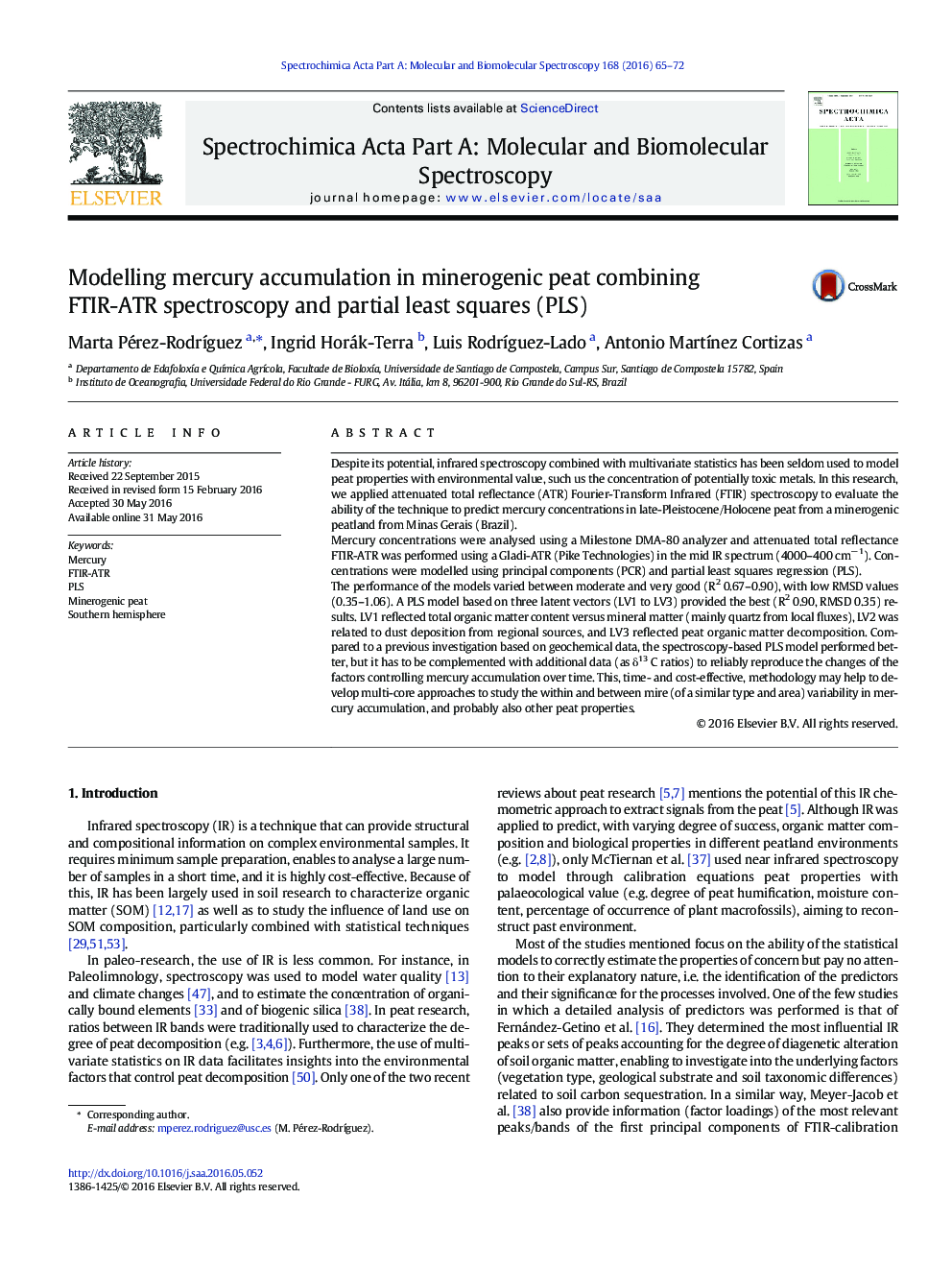| Article ID | Journal | Published Year | Pages | File Type |
|---|---|---|---|---|
| 1230409 | Spectrochimica Acta Part A: Molecular and Biomolecular Spectroscopy | 2016 | 8 Pages |
•We analysed by FTIR-ATR a peat core from a minerogenic peatland from Brazil.•Statistical techniques (PCR and PLS) were applied to predict Hg concentrations using the spectroscopic data.•A PLS model with three components provided the best accurate results (R2 0.90, RMSD 0.35).•FTIR-ATR data may enable to efficiently (cost and time) study within and between-mire variations in mercury accumulation.•Additional information is needed to account for all factors that controlled mercury accumulation during the last 60 ka.
Despite its potential, infrared spectroscopy combined with multivariate statistics has been seldom used to model peat properties with environmental value, such us the concentration of potentially toxic metals. In this research, we applied attenuated total reflectance (ATR) Fourier-Transform Infrared (FTIR) spectroscopy to evaluate the ability of the technique to predict mercury concentrations in late-Pleistocene/Holocene peat from a minerogenic peatland from Minas Gerais (Brazil).Mercury concentrations were analysed using a Milestone DMA-80 analyzer and attenuated total reflectance FTIR-ATR was performed using a Gladi-ATR (Pike Technologies) in the mid IR spectrum (4000–400 cm− 1). Concentrations were modelled using principal components (PCR) and partial least squares regression (PLS).The performance of the models varied between moderate and very good (R2 0.67–0.90), with low RMSD values (0.35–1.06). A PLS model based on three latent vectors (LV1 to LV3) provided the best (R2 0.90, RMSD 0.35) results. LV1 reflected total organic matter content versus mineral matter (mainly quartz from local fluxes), LV2 was related to dust deposition from regional sources, and LV3 reflected peat organic matter decomposition. Compared to a previous investigation based on geochemical data, the spectroscopy-based PLS model performed better, but it has to be complemented with additional data (as δ13 C ratios) to reliably reproduce the changes of the factors controlling mercury accumulation over time. This, time- and cost-effective, methodology may help to develop multi-core approaches to study the within and between mire (of a similar type and area) variability in mercury accumulation, and probably also other peat properties.
